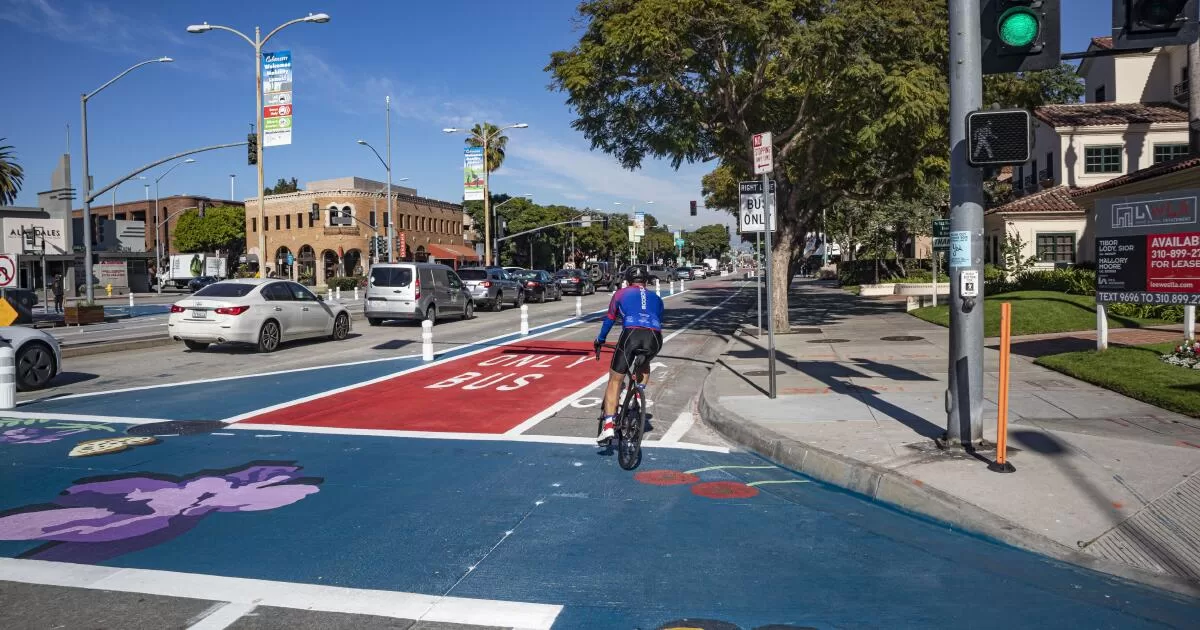If passed, it would require 238 miles of protected bike lanes and add hundreds more unprotected lanes, transforming some of the region’s most storied boulevards. Ventura Boulevard in the San Fernando Valley and Soto Street on the Eastside, among dozens of others, would get new bike lanes. The measure would add 300 miles of improvements for buses, including bus lanes and signal prioritization for public transit, proponents say.
“There’s a lot at stake here. It’s not just about this measure. It’s about, like, what kind of city do Angelenos want to live in,” said Michael Schneider, who has led the HLA campaign and is executive director of advocacy group Streets for All, which conceived the measure.
The campaign has spent more than $3 million, gaining the support of half a dozen City Council members, business groups and unions. It faced little financially backed opposition until a month ago, when the city’s firefighters union stepped in to fight it.
United Firefighters of Los Angeles City Local 112, which represents about 3,400 firefighters, said is has spent $250,000 in an effort to defeat the measure.
“These road diets are delaying our response time when the residents of Los Angeles call 911,” said union president Freddy Escobar.
City Administrative Officer Matt Szabo released a report a day after the firefighters came out against the plan, warning that Measure HLA projects would cost the city $3.1 billion and would force difficult budget choices in the coming years.
Szabo estimated that bicycle upgrades under HLA would cost $1.1 billion, while sidewalk improvements would add $2 billion. Community outreach could increase the bill by $80 million, according to his report.
Schneider and supporters have said Szabo’s estimates are inflated.
“I really hope voters see through this stuff and and recognize the reality on our streets,” Schneider said.
Schneider said the HLA campaign reached a different cost estimate after obtaining records from the city’s Department of Transportation and Bureau of Engineering. He estimates that the ballot measure would cost $28.6 million per year if all projects are completed within a decade; however, he points out, the measure does not mandate that timeline.
HLA is based on the city’s 2015 mobility plan, which has yet to be fully realized.
Escobar said the architects of HLA didn’t attempt to meet with firefighters as it was being developed.
Under the measure, residents could sue over instances when Los Angeles fails to implement the plan. Officials would need to add transparency to the process by creating a website where residents can check up on progress.
But if the measure prevails, there is nothing in it to guide how it could be implemented. Szabo has said that the financial strain could force the city to delay other pavement projects. And some transit advocates worry that the plan does not take into account community needs.
